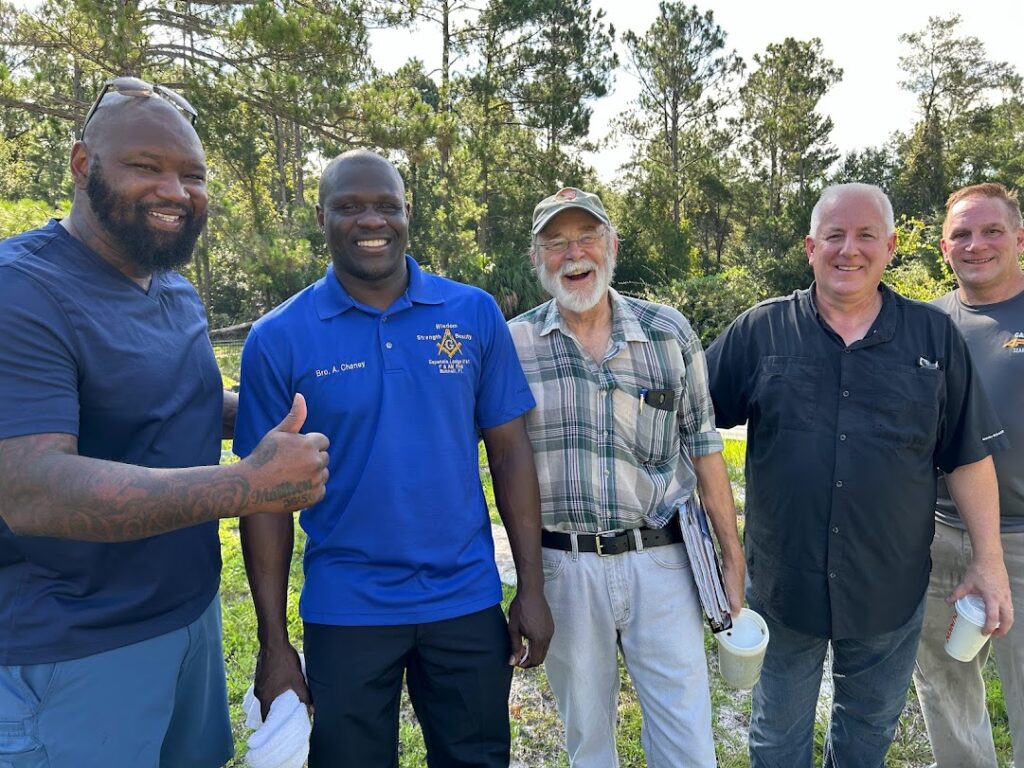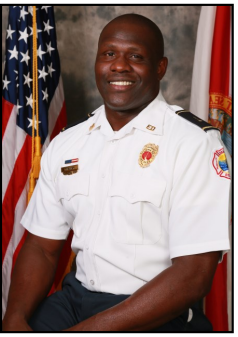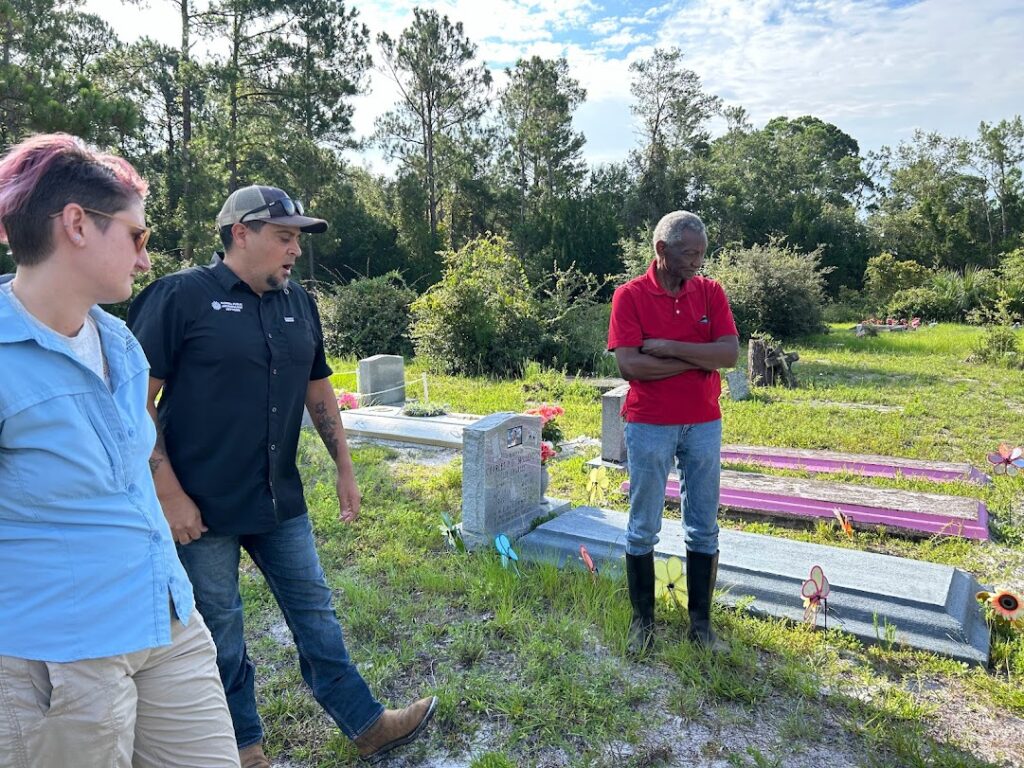PALM COAST, Fla. – Historic preservation is finally catching on in Flagler County and among the recipients of some TLC will be the Masonic Cemetery on Old Kings Road in Palm Coast.
Not officially a relic yet, the cemetery’s historic value is gaged in something much more precious than a building or a story – people’s lives. Serving as the only predominantly African American cemetery in Flagler County, the land, deeded by Lewis Wadsworth in 1948 provided a place for the Black community to bury their loved ones.
Unlike other cemeteries with dedicated caretakers or family members who schedule regular cleanup days, this one has fallen into disrepair due to a lack of coordinated care and vandalism over the years.
Past community cleanups by civic organizations, churches and even inmates from the Flagler County jail have been little more than a Band-aid in the big picture.
Now, with younger members of the Masonic Lodge at the helm, they’re partnering with local and state organizations to restore the historic cemetery to its rightful place in Flagler’s history.
Creating the Team
Collaborating on the project is James Fiske, a member of the Flagler County Historical Society.
“I came out here to look it over for the very first time and take some pictures. I’m a grown man and I broke down. Seeing the headstones broken, graves broken into, it broke my heart,” shared Fiske.

Connecting with Andre Chaney, Past Master of the Espanola Masonic Lodge 161, the small group met with representatives from the Florida Public Archeology Network on August 2nd to talk about the necessary steps to begin the process of surveying the location and notating the current, visible graves on site.
“Since I became a member of this lodge eight years ago, I came out here with our Past Worshipful Master James Crockett, who is now deceased. He brought me out here and we started doing cemetery work then,” shared Chaney, a Fort Pierce native. “We have been trying diligently to maintain this place to get it to a point to where it could be a respected cemetery, as it should, and we’re still doing this work.
“I reached out to the likes of Mr. Fiske, to try and get this place on the National Register, so that’s why everybody’s out here today. We have the packet to do the necessary things to make that happen. It’s going to be a little bit of a process, but it’s a task we’re willing to take on, and rightfully so. It should be as a national registry amongst the cemeteries because we have loved ones that’s buried out here that should have that respect,” he said.
Based on recommendations from a legislative task force to address abandoned and historic African American cemeteries, the Florida Legislature passed HB49 into law in 2023. Creating a Historic Cemeteries Program in the Division of Historical Resources under the Florida Department of State, the legislation provides a variety of resources including a dedicated advisory council, grant funding for repair, restoration, and maintenance of the cemeteries in addition to and the purchase of conservation easements surrounding the cemeteries.

Chaney, a Lieutenant and 20+ year member of the City of Daytona Beach Fire Department, is encouraged by the steps being taken to support efforts like theirs and determined to see the project through.
“I’ve been reading about other cemeteries receiving help, and it’s giving me more hope along with the historical society to try and get this cemetery along that same path,” he said.
Fellow Mason Alfonzo Dillard envisions community cleanup days where families and volunteers can lend a hand, and also join in fellowship.
“This is something that’s a long time coming. I honestly believe that all-hands-on-board are in the right direction. Something will be done today because we now have hands on the table. Now the attention is here,” he said.
While Dillard’s family is buried in Seville, Florida, as a member of the Espanola Lodge, he believes the community has a responsibility to those who have come before, to maintain and respect their final resting places.
“The bigger problem that I see here is that it’s forgotten. Until the sand is needed for another burial, no one comes out to show love to it, no one remembers the fallen. There’s some real, real great people. The headstones don’t do due diligence, but when you see something out here that says World War II, Vietnam, or an elderly who’s part of the community for 50 or 60 years, serving, the community has to remember that. If we forget the past, then we cannot move towards the future.”
“I want the community to be looking forward to a cemetery day. Maybe once every 60 days, and we put up some hotdog stands, and we make it a community event to come out and take part in this,” said Dillard.
“This is our past and one day it will be your present.”












































